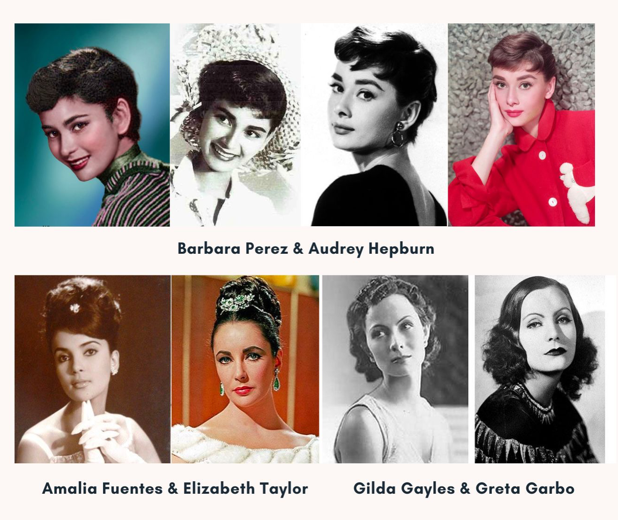Nora as a Function of Beauty
As a child, I grew up in a primarily international environment where I was one of the only ‘purely’ Filipino kids and therefore, was acutely aware of how colorism seeped into everything, from friendships to getting cast in school plays (I was always the kontrabida1) to who was ‘allowed’ to have a crush on who. My family lived in one of the premiere villages in the south of Metro Manila and I went to a tiny school where most of my classmates were half-white. My best friend was half-German and blonde with hazel eyes, my childhood crush (and literally the boy next door) was half-American and had cheeks which flushed red after we played under the sun.
In third grade, I had my first M.U. or mutual understanding. He was the first boy I’d seriously liked aside from the boy next door, who I’d known since babyhood. We were both at the top of the class and started liking each other by competing in academics. After school we’d talk over the phone for hours, quizzing each other about the next day’s homework. We would let the other listen to songs we liked by holding up the landline receiver to a boombox speaker. It was mostly NSYNC and Christina Aguilera, occasionally Mariah Carey. This went on until one birthday party at a classmate’s house where we played Truth or Dare and he had to confess who his crush was to the class. When he said my name, our class President was incredulous. ‘WHAT? Wina?!? Black Girl?’
M.U. quickly rescinded his answer, saying he was just kidding. By that Monday, he was on a PR cleanse, letting everyone know he now liked one of our classmates who was also full Filipino but who had more East Asian features, pale skin. When I threw a fit and started crying in the girls’ bathroom, my friends arranged for us to make up by granting him special entry into the lavatory. He comforted me through the slat in the cubicle door by saying: hey, come on – you’re not stupid or ugly, you’re just dark.
The thing that dawned on me later on in the school year was that he was moreno and Filipino too, but no one had judged me for liking him. The lesson learned: a brown boy could be considered handsome if he was also smart, affluent, and charming. The same rules did not apply to brown girls.
In the era of #MorenaEmpowerment, where actresses like Nadine Lustre and Kathryn Bernardo are considered icons and local beauty brands like GRWM Cosmetics and Issy & Co. are thriving, stories like this seem like they’re from a different lifetime. It’s tempting to take our current societal accommodations for Pinay beauty for granted. Although we’ve come a long way in finally seeing brown skin as beautiful, we shouldn’t forget how recently this was accepted not even as fact, but just as a possibility, specifically by the mainstream film and media industry. Moreover, we must acknowledge that actresses like Lustre and Bernardo are still the exception and are far outnumbered by actresses belonging to the mestizaje class like Liza-slash-Hope Soberano, Bea Alonzo, Angelica Panganiban, Anne Curtis, Solenn Heusaff, Jane De Leon, etc.

L: Nadine Lustre in Preview Magazine, R: Kathryn Bernardo in the Manila Standard
In her paper entitled Sharon’s Noranian Turn: Stardom, Embodiment, and Language in Philippine Cinema, Bliss Cua Lim states that ‘the mestiza/o stars of the 1960s and the 1970s rose to fame and were selected for the screen precisely because they had features that were similar to those of Western Hollywood stars (that is to say, they were ‘white-passing’)’. Some examples of this ‘versionising’ or ‘approximation’ phenomena were Barbara Perez, cast for her resemblance to Audrey Hepburn, Amalia Fuentes, styled to be the Elizabeth Taylor of the Philippines, and Gilda Gayles, titled the Greta Garbo of the Philippines.

In a further exploration of the dissonance between the world of the silver screen and real life, Lim quotes Nick Joaquin to have described the mestizaje class dressed in nativist attire and speaking a ‘purist, florid Tagalog’ as, ‘Fantasy Filipinos speaking fantasy Pilipino’. By providing no representation for non-mestizo/as on screen, these narratives and images set in places like barrios and the Filipino countryside became populated in the collective mind by the mestizaje; they serve as a kind of middle ground between the ‘whiteness’ of Hollywood and colonial or postcolonial power, and the ‘brownness’ of their audience who are comprised primarily of those from lower income earning backgrounds’.
What do we fantasise about as a nation? Why is what we consider beautiful so essential to whether or not we have agency over our own lives? Who do we allow to speak our words and take action in our collective imagination? Who makes us sick with jealousy? Why does it matter?
According to John Berger in Ways of Seeing, glamour is essentially rooted in envy. He states that, ‘Glamour cannot exist without personal social envy being a common and widespread emotion. The industrial society which has moved towards democracy and then stopped half way is the ideal society for generating such an emotion’. Although Berger almost definitely had western society in mind when he wrote this, isn’t this also the perfect description of Philippine society? A society that at one point was gung-ho on fighting for its rights, then stumbled halfway there, and found itself suddenly unsure of where it was going?
Isn’t the idea of ‘personal social envy’ achingly accurate when we describe the way that we as a nation worship and appropriate people we consider beautiful? Isn’t this the relationship we have with both content and form? We take our actresses and beauty queens seriously: if the whitest of us are ugly, then we must be ugly. If the whitest of us are beautiful, we must be beautiful. The medium through which we consume film and media has gone from the big screen to our TV screens to our mobile devices which sleep beside us or under our pillows at night. To try and emulate what we see on-screen, we buy skin whitening products which sit in our cabinets next to the SPF and deodorant, making themselves comfortable in our homes as part of our arsenal of weapons against the assault of deeply rooted colonial insecurity and self-hatred. In 2023, the way that ‘whiteness’ has incorporated itself into our conceptions of beauty comes up with a new strategy to pitch us an old product – even when it doesn’t necessarily code for ‘Caucasian’, with the advent of adulation for all things Korean and East Asian, skin whitening has shed its old lexicon, trading in ‘whitening’ for ‘toning up’ or ‘brightening’, but nonetheless selling us the same alabaster complexion.
I must also point out that although morena beauty is now more widely accepted as a concept, there is another common caveat which weaponises a different set of colonial insecurities: maitim ka pero makinis ka naman, or morena ka pero hindi ka mukhang madumi2. Dark skin has been coded as rough, savage, uncouth, uncivilised so many times throughout history and historical studies, at this point I’m no longer sure who to cite. But I am sure of one thing: this backhanded way of propagating colorism is insidious and must be confronted, brought to the surface whenever it is encountered.
I chose Nora and her body of work as the ekphrastic subject of Functions:Poems because of her pivotal role in shifting the landscape of film and media toward a scenario where Filipinos could consider themselves worthy of a starring role, worthy of being the object of desire, worthy of being on the big screen, playing an active part in the scenes of their own lives. Although Nora as a person by no means eradicated the effects of colonialism or even managed to successfully decolonise her own beliefs and self-image, there’s no denying her role in paving the way for non-mestizaje representation. Film historian Nicanor Tiongson offers a very simple premise with regard to Nora’s role in the racialised mechanics of casting in the 1960s and 1970s: ‘maganda ang maputi (white is beautiful); Nora Aunor was at the time the sole exception to that rule’3.













